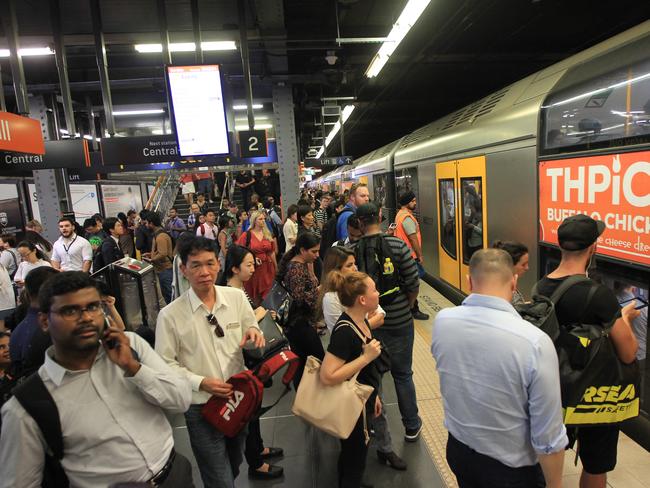What work will look like post-pandemic
Flexible work is pegged to be an enduring legacy of the pandemic, and is impacting not just where, but how we do our jobs.
SmartDaily
Don't miss out on the headlines from SmartDaily. Followed categories will be added to My News.
Covid-19 has supercharged the trend towards flexible work, and while many are revelling in the perks, some are reflecting on the fresh challenges it brings, and what has been lost.
For Sydney HR partner Ellen Paperny, eliminating her two-hour daily commute has been the biggest boon, since her company mainstreamed flexible work and downsized its office space after last year’s nationwide lockdown.
“I would really struggle if I had to do my full work week without that reprieve,” says Ms Paperny, who is expecting her third child in January.

“There was always the stress of getting back in time before childcare closed, but the commute was just one part of it. I can do essential things at home if I need to, and can work in the evening … it’s easier to keep on top of things at home, and at work.”
With all signs pointing to a permanent shift in workplace flexibility beyond the pandemic, Ms Paperny and husband Eugene, a strategy consultant, are among millions of Australian employees reaping its benefits.
A HYBRID FUTURE
The number of people working at least one day from home has almost doubled to 41 per cent since the beginning of the pandemic - not including the higher rates during lockdowns - according to the latest ABS Household Impacts of Covid-19 survey. Most are keen for it to continue, with an Australian Council of Trade Unions survey finding 81 per cent want to keep working from home in some capacity.

“Digital technology was already opening up wider vistas for home work arrangements - but the pandemic accelerated these trends with a lasting impact,” says Alison Pennington, senior economist at the Australia Institute’s Centre for Future Work.
According to Ms Pennington, hybrid work arrangements are generally preferable to exclusive remote working, and will be here to stay post-pandemic. “We are social beings - most brains need to work with others,” she says. “Two days at home - three days at work is an indication of what could be optimal. Some days you just need to smash it out without interruptions, other days you need that back-and-forth.” A University of Sydney Business School report, submitted to the Fair Work Commission, reveals a growing preference for other forms of work flexibility as well. It found a doubling of support for compressed working weeks and job sharing, backed by 60 per cent and 41 per cent of respondents, respectively.

NEW WORLD OF WORK
The shift has broad implications for management styles through to talent retention, according to Australian HR Institute CEO Sarah McCann-Bartlett. Eliminating geographical boundaries expands the potential talent pool, and also challenges managers to adapt to new ways of supporting a remote workforce. “What we expect of leaders has changed - they are expected to be more open and empathetic,” she says.
Passing on the costs of running an office to employees - from rent to utilities - frees up funds for wellbeing practices and training, Ms McCann-Bartlett adds, as employees at all levels adapt to the new world of work.

For example, when managers can’t rely on casual office chats, they need to be trained in other means of encouraging inclusivity and cross-functional collaboration. “They’ve had to look at how they bring teams together when they’re not together - being deliberate about that connection and getting to know their colleagues, not just in a transactional way,” she says. “There are even things like making new rituals - maybe Daniel would make cakes on a Thursday and bring them in. Birthday rituals were always big in the office - they need to think about what’s going to replace all that.”
THE CHALLENGES
Workplace democracy can be a casualty of flexible arrangements, warns Ms Pennington, with fewer opportunities for employees to gather. “Normal industrial relations channels have been dismantled by working from home,” she says. “People don’t just get together to produce work, they are also more likely to raise problems around work or pay.” With employees able to set their own hours at home, she also flags the risk of cheapening unsociable work hours, which may otherwise attract penalty rates.

As hybrid work arrangements become entrenched, and workers have the option to choose their own days in the office, Ms McCann-Bartlett predicts the rise of ‘proximity bias’, suggesting that workers who are physically out of sight, could become out of mind. “If you have a workforce where some people are mostly in the office and others are mostly working from home, the ones there with their manager may get the good assignments or promotions,” she says. “There will need to be a real deliberateness around how everyone is included.”
For Ms Paperny, missing out on “water cooler chats” is a downside of not being in the office. “When you’re on calls, they’re for a particular purpose and with your direct team - you can miss out on the mentoring, sharing of knowledge, and exposure to new things,” she says. “I miss hearing what other teams are working on. They might make a comment that triggers an idea, an improvement.”
Originally published as What work will look like post-pandemic



